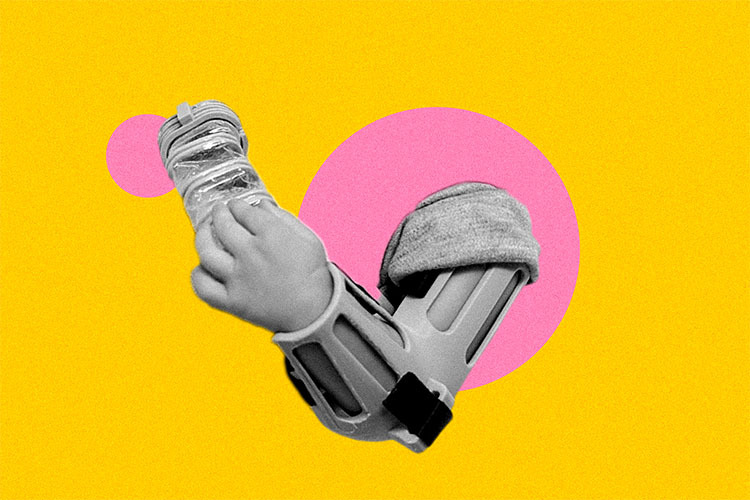Between the rush of work and lunchtime, many people choose to grab a bite from street vendors—but how safe is that option? A research team from Tecnológico de Monterrey set out to answer that question. Over the course of three years, they analyzed food from street stalls that met certain hygiene standards and discovered bacteria resistant to several antibiotics.
The study is part of a broader microbiological investigation conducted in Toluca, the capital of the State of Mexico, led by researcher Miguel Ángel Ontiveros from the School of Engineering and Sciences at that campus.
“We wanted to know what bacteria are present before they reach the patient and cause illness, hospitalization, or even more serious issues. In street food, we found strains that can even overcome local immune defenses,” the researcher explains.
The project took shape from the thesis work of Tec researcher Daniela Mora, driven by the team’s concern over the number of illness and death cases in the state linked to bacterial infections. They also found that many of the commonly prescribed medications are no longer effective in treating these conditions.
Characteristics of Street Food
During the study, researchers focused on prepared foods sold by street vendors without access to clean running water or restroom facilities, often exposed to open air, traffic, and lacking refrigeration.
They categorized the foods into four distinct groups based on their ingredients and preparation methods: sauces, raw vegetables, edible fruits or those blended into drinks like juices and smoothies, and cooked foods made from meat or flour. Special attention was given to items that are not cooked, such as raw sauces.
Ontiveros notes that the foods posing the greatest health risk due to antibiotic-resistant bacteria were mainly those containing raw vegetables, especially when they weren’t properly washed or were rinsed with low-quality water. In contrast, foods that had been cooked showed lower levels of contamination.
Presence of Different Strains of E. coli
Using biochemical tests, the researchers analyzed nearly 200 samples collected from three different locations in the city—and in 100% of the cases, they detected fecal coliforms. These are pathogenic bacteria commonly found in the feces of humans and animals. The team primarily identified three strains of Escherichia coli (E. coli): two intestinal and one extraintestinal.
The intestinal strains affecting the digestive system included enterotoxigenic E. coli, which produces toxins that cause severe diarrhea with loss of water and electrolytes, and diffusely adherent E. coli, which targets cells in the small intestine, such as enterocytes, and can also lead to diarrheal illness. The first strain was found in all of the samples, while the second appeared in 27% of them.
The extraintestinal strain detected was uropathogenic E. coli, known for causing urinary tract infections like cystitis, which inflames the bladder and, if it spreads into surrounding tissue, can result in serious complications such as kidney failure.
Although the study focused on these three pathogens, researchers also found signs of other bacteria, including Salmonella and Shigella—both linked to infectious diarrhea—as well as Klebsiella and Proteus, which are associated with urinary or respiratory infections.
The Silent Resistance of Bacteria to Medication
Several treatments no longer work as effectively against pathogens, warns Ontiveros. Some drugs—such as tetracycline, polymyxin, and those in the quinolone family—still showed a degree of effectiveness, but none were fully reliable.
The researchers carried out molecular (PCR) and sensitivity tests, which revealed resistance genes in the bacteria against various types of medications. They cultivated the pathogens and exposed them to 12 commonly prescribed antibiotics, including ampicillin, amoxicillin with clavulanic acid, cephalexin, and polymyxin B.
“Antibiotics that used to be very effective are now practically useless. We may be reaching a point where prescriptions are being given for drugs that no longer make much sense,” he says. “The WHO (World Health Organization) has made it clear: the problem of antibiotic resistance is already a major concern and should be at the forefront of scientific research.”
According to the researcher, the improper or excessive use of antibiotics has driven bacteria to evolve and develop resistance to their effects.
And the problem worsens when those resistant bacteria are present in the environment—especially in everyday foods like those sold on the street.
For that reason, Ontiveros stresses the importance of linking what is prescribed to patients with environmental surveillance, in order to better gauge how effective antibiotics actually are. To that end, his team is building bacterial banks to store strains isolated from food, allowing for long-term tracking and future research.
They are also testing plant-based compounds, such as those found in moringa, to see whether they can enhance the microbicidal power of outdated antibiotics and help restore their effectiveness against various infections.
For Ontiveros, the most valuable outcome of the study was documenting the bacterial load and resistance profiles in street-vended foods. He emphasizes that it’s critical to regularly assess hygiene practices at food stalls, especially during food preparation.
“In these three years, we’ve been able to outline what’s out there, but we want to keep monitoring, because bacteria mutate rapidly and their resistance profiles can shift over time.”
Did you find this story interesting? Would you like to publish it? Contact our content editor to learn more at marianaleonm@tec.mx

















